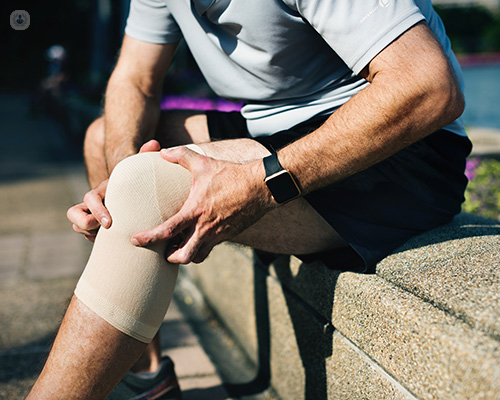

What are growth factors for sports injuries?
Using plasma rich in growth factors is a technique used to treat injuries, especially sports injuries. Growth factors are proteins found in the blood which have a great capacity to accelerate the regeneration of tissue. Growth factors have biological effects such as cell proliferation and differentiation, regeneration of blood vessels (angiogenesis) and migration of cells to where regeneration needs to take place (chemotaxis).

What are sports growth factors used for?
Sports medicine specialists often use growth factors to treat sports injuries in elite athletes to try to shorten the recovery time after an injury, whether it be a muscle, tendon, ligament or joint. When applying the treatment it is important to correctly locate the injury with an ultrasound. The timing of injection is also very important in order for the treatment to be successful. The number of injections required will vary depending on the injury, but there should be no more than 21 days between each treatment.
What does this treatment involve?
Using growth factors for sports injuries involves extracting blood from the affected person and centrifuging it outside the body in order to isolate and concentrate the necessary proteins. The plasma will then be re-injected into the areas to be treated. To control the injection, it is visualised using ultrasound. When the plasma rich in growth factors infiltrates the injury, it accelerates and improves the cell regeneration process, shortening the recovery time and reducing complications. In addition, the intraoperative use of growth factors in arthroscopy, tendon ruptures or anterior cruciate ligament operations, among others, has delivered good results that allow the person to recover properly in less time.
This technique has a wide field of application and is becoming increasingly popular not only with elite athletes, but anyone who engages in physical activities at any level.
Preparing for sport growth factor treatment:
Using growth factors for sports injuries is a simple, harmless and a non-invasive technique or intervention, so not much preparation is required beforehand. In any case, the sports medicine specialist will inform you about what is required. Preoperative tests such as an ultrasound and an MRI scan will be necessary in order to identify the exact location of the injury. You should also inform the specialist of any medication you are taking.
Post-treatment care:
Treatment using growth factors is usually safe and well tolerated, and it has no adverse effects. However, the specialist will tell you what procedure to follow after injection of the growth factors. The treatment also has a regenerative, anti-inflammatory and analgesic effect so, in addition to speeding up recovery, it will reduce pain and improve the mobility of the treated joint or tissue.
